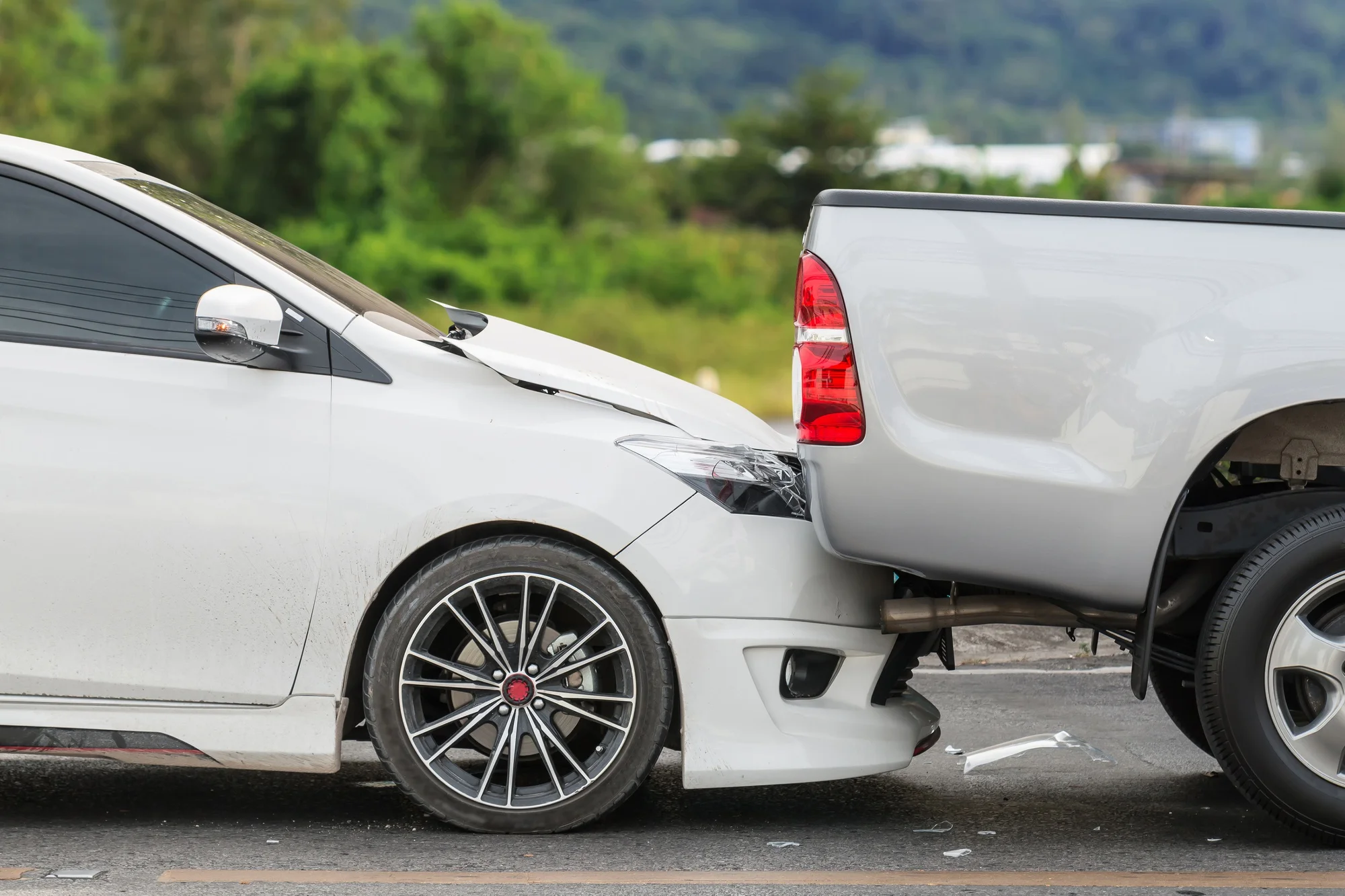Understanding negligence claims requires grasping the fundamental concept of prima facie cases in personal injury law. At its foundation, a prima facie case of negligence emerges when sufficient initial evidence demonstrates that one party failed to uphold their legal obligation to exercise reasonable care, directly resulting in harm to another person. This legal framework serves as the cornerstone for various types of injury claims, establishing the preliminary burden an injured party must meet to show that their case warrants further legal proceedings. When someone fails to exercise the level of caution that a prudent individual would demonstrate under comparable conditions, and this failure leads to injury, the elements of a prima facie negligence case begin to take shape. The term itself, derived from Latin meaning “at first sight” or “on first appearance,” reflects the initial threshold of evidence required to establish that a negligence claim deserves consideration in court. This foundational understanding sets the stage for exploring how these cases develop and what injured parties must prove to seek compensation for their losses.
What is Prima Facie Negligence?
In the realm of civil law, prima facie negligence represents a distinctive legal standard that establishes the baseline evidence needed to pursue a negligence claim. This legal concept, rooted in the Latin expression meaning “at first appearance,” encompasses situations where an individual or entity’s conduct falls short of the expected standard of reasonable care that society demands. The significance of prima facie negligence lies in its dual nature as it can manifest through either active misconduct or the failure to act when legally required to do so. For instance, a healthcare provider who deviates from established medical protocols or a property owner who ignores hazardous conditions could both establish prima facie negligence cases. The determination hinges on whether the initial evidence presents a compelling argument that the defendant’s actions or inactions deviated from what a reasonably careful person would have done under similar circumstances as this creates a rebuttable presumption of negligence that stands unless effectively challenged with contrary evidence. This foundational understanding serves as the starting point for evaluating potential negligence claims across various contexts, from professional settings to everyday interactions where one party’s conduct results in harm to another.
Elements of Prima Facie Negligence
Prima facie negligence cases require establishing specific foundational elements that demonstrate a legal basis for liability in personal injury matters. The legal system has developed these core requirements to ensure a structured evaluation of negligence claims to provide a clear framework for both plaintiffs and defendants to understand their positions. Each element builds upon the other to create a comprehensive picture of responsibility and causation that courts use to assess the validity of negligence claims. From establishing the fundamental responsibility between parties to documenting actual harm, these components work together to form the backbone of personal injury law. Understanding these elements is crucial for anyone pursuing a negligence claim, as failing to prove any single element can result in the dismissal of the entire case.
Essential elements of prima facie negligence include:
- Duty of care
- Breach of duty
- Causation
- Actual damages
The presence of these elements transforms what might otherwise be a simple accident into a legally actionable case of negligence. This structured approach ensures that legitimate claims can proceed while filtering out cases that lack the necessary legal foundation for pursuing damages.
Common Prima Facie Negligence Accidents
Personal injury law encompasses a wide spectrum of incidents where prima facie negligence can be established through clear evidence of careless or inadequate actions leading to harm. These incidents occur across various settings and circumstances, each presenting unique challenges in establishing the elements of negligence. While the specific details may vary, these cases share common threads in how they develop and impact victims. The legal system has developed specialized approaches for handling different categories of negligence cases, recognizing that each type requires distinct considerations in proving liability and securing appropriate compensation for injuries sustained. The most common types of prima facie negligence accidents include:
- Vehicular collisions (passenger vehicles, commercial trucks, motorcycles)
- Premises liability incidents
- Product liability cases
- Construction site accidents
- Medical malpractice events
- Workplace injuries
Each of these accident categories requires specialized legal knowledge to navigate effectively, as the standards for establishing prima facie negligence may vary depending on the specific circumstances and applicable laws governing different types of incidents. The complexity of these cases often requires careful documentation and expert testimony to establish the required elements of negligence.
Car Accidents
Automotive collisions represent a significant category of prima facie negligence claims, stemming from the fundamental responsibility every driver assumes when operating a vehicle on public roadways. The legal system recognizes that operating a motor vehicle carries inherent obligations to exercise reasonable caution and follow established traffic regulations for the safety of all road users. When examining vehicular accidents through the lens of prima facie negligence, certain behaviors immediately establish grounds for liability. These include operating a vehicle at excessive speeds, navigating while impaired by substances, disregarding traffic signals, failing to yield right of way, or engaging in distracted driving behaviors. Each of these actions demonstrates a clear departure from the standard of care expected of reasonable drivers and, when resulting in an accident, typically meets the threshold for prima facie evidence of negligence. The straightforward nature of documenting these violations through police reports, traffic cameras, witness statements, and physical evidence makes car accidents particularly conducive to establishing prima facie cases in personal injury claims.
Premises Liability Accidents
Premises liability represents a distinct category of prima facie negligence cases that centers on the legal obligations property owners and managers have toward individuals who enter their premises. This area of law encompasses a broad spectrum of incidents where property conditions or inadequate maintenance directly contribute to visitor injuries. The foundation of these cases rests on the property owner’s fundamental duty to maintain safe conditions and provide adequate warnings about potential hazards that could endanger visitors, customers, or tenants. When property owners or managers fail to address known safety issues or neglect to implement reasonable security measures, they create conditions that can establish prima facie evidence of negligence. Common scenarios include inadequate lighting in parking facilities, broken stairs or handrails, unmarked wet floors, unsecured swimming pools, icy walkways left untreated, and unrestrained animals on the property. The establishment of prima facie negligence in these cases often hinges on demonstrating that the property owner knew or should have known about the hazardous condition and failed to take appropriate corrective action within a reasonable timeframe.
Product Liability Accidents
Product liability cases form a crucial component of prima facie negligence law that focuses on the inherent responsibility manufacturers bear to ensure consumer safety through their products and services. In these cases, the legal framework emphasizes the manufacturer’s obligation to deliver items that function safely when used as intended and to provide adequate warnings about potential risks. This area of negligence law becomes particularly significant when examining consumer goods that enter the marketplace with design flaws, manufacturing defects, or inadequate safety warnings that subsequently cause injury or harm. The scope encompasses everything from household appliances and consumer electronics to pharmaceutical products and industrial equipment. The establishment of prima facie negligence in product liability cases often proves straightforward, as physical evidence of the defect, combined with documentation of resulting injuries, creates a compelling initial case. Documentation of similar incidents or patterns of malfunction across multiple units can further strengthen the prima facie elements, particularly when manufacturers have shown awareness of potential hazards yet continued to distribute the product without adequate remediation or consumer notification.
Construction Accidents
Construction site negligence represents a distinct category of prima facie cases due to the complex web of safety regulations and duty of care requirements inherent to the industry. These environments pose unique challenges in establishing negligence claims because of the multiple parties typically involved. These parties include general contractors, subcontractors, property owners, and equipment manufacturers with each bearing specific responsibilities for maintaining workplace safety. The prima facie elements often emerge clearly in construction accidents due to the highly regulated nature of the industry, where specific safety protocols, building codes, and OSHA requirements create well defined standards of care. When these standards are breached, such as through improper scaffolding assembly, inadequate fall protection, unsafe electrical systems, or failure to secure construction zones, establishing the initial burden of proof becomes more straightforward. The presence of mandatory safety documentation, inspection reports, and witness accounts from other workers on site typically provides substantial evidence for demonstrating how a departure from required safety measures directly contributed to an injury which makes construction accidents particularly conducive to prima facie negligence claims.
Medical Malpractice
Medical malpractice constitutes a specialized category of prima facie negligence cases that are distinguished by the elevated standard of care expected from healthcare professionals and medical institutions. In these cases, the establishment of prima facie negligence centers on demonstrating how a medical provider’s actions or decisions deviated from accepted standards of medical practice within their specialty. The unique aspect of medical malpractice lies in its requirement to show not just ordinary negligence, but a departure from the specific protocols and practices established by the medical community. These cases often involve documented incidents such as surgical errors, misdiagnosis, medication mistakes, or failure to obtain informed consent. The prima facie elements become particularly compelling when medical records clearly demonstrate the departure from standard procedures like when a physician fails to order appropriate diagnostic tests, misinterprets clear laboratory results, or performs procedures outside established medical guidelines. The presence of expert testimony, detailed medical documentation, and established treatment protocols creates a framework where the initial burden of proving negligence can be met through clear evidence of deviation from accepted medical standards of care.
Workplace Injury Accidents
Workplace injury cases present a unique framework within prima facie negligence law, where employers’ statutory obligations to maintain safe working environments intersect with common law duties of care. These cases are distinguished by the comprehensive regulations governing workplace safety including OSHA standards and industry specific requirements, which help establish clear benchmarks for determining when an employer has failed to meet their legal obligations. Prima facie negligence in workplace settings often manifests through documented violations of safety protocols, inadequate training programs, failure to provide proper safety equipment, or maintaining hazardous conditions that directly contribute to employee injuries. The burden of establishing prima facie evidence frequently becomes clearer in workplace cases due to mandatory incident reporting requirements, safety inspection records, and employee training documentation that create a paper trail of compliance or noncompliance. These cases can encompass various scenarios, from repetitive stress injuries caused by inadequate ergonomic conditions to acute injuries resulting from malfunctioning equipment or unsafe procedures, where the connection between employer negligence and worker injury can be readily demonstrated through existing documentation and established safety standards.
Handling Prima Facie Negligence Cases
The successful management of prima facie negligence cases hinges on the systematic collection and presentation of compelling evidence that establishes clear liability. Critical to building a strong foundation for these cases is the comprehensive gathering of documentation that substantiates each element of negligence beyond reasonable dispute. A well-constructed prima facie case relies on multiple forms of evidence working in concert to create an irrefutable narrative of negligence and resulting harm. This may encompass:
- Physical evidence from the incident scene
- Expert analysis and testimony
- Comprehensive medical documentation detailing injuries and treatment
- Photographic or video documentation capturing the circumstances of the incident
- Official reports from responding authorities
- Statements from eyewitnesses who observed the events firsthand.
The strength of a prima facie negligence case often lies in its ability to present such overwhelming evidence that it creates a presumption of liability that becomes difficult for defendants to overcome. This methodical approach to evidence collection and preservation, coupled with proper documentation of damages and causation, forms the cornerstone of successfully handling these legal matters.
Proving Prima Facie Negligence
Establishing a prima facie negligence case requires methodical demonstration of interconnected legal elements that collectively prove liability for injuries or damages sustained. The burden of proof in these cases follows a structured framework where each component builds upon the previous one to create a comprehensive legal argument. The foundation begins with demonstrating the existence of a legal obligation, which can arise from statutory requirements, established case law precedents, or fundamental societal expectations of reasonable behavior. This duty must then be connected to specific actions or inactions that represent a clear departure from the expected standard of care. The legal analysis continues by establishing a direct causal link between this breach and the resulting harm, culminating in the presentation of concrete evidence of actual damages. Successful proof of prima facie negligence often relies on multiple sources of documentation, from medical records and expert testimony to photographic evidence and witness statements, all working together to establish an initial presumption of liability that meets the threshold requirements for legal action. Core requirements for proving prima facie negligence include:
- Establishment of legal duty
- Evidence of duty breach
- Demonstration of causation
- Documentation of actual damages
This systematic approach to proving negligence ensures that each required element is adequately addressed in order to create a solid foundation for pursuing compensation for injuries and losses sustained due to another party’s negligent conduct.
How Do You Prove Someone Breached a Duty of Care?
Establishing a breach of duty of care in negligence cases requires an evaluation of the defendant’s actions against established legal standards and reasonable expectations. Courts employ specific analytical frameworks to determine whether a party’s conduct fell below the required standard of care, often utilizing both qualitative and quantitative assessments. One widely recognized method is the Hand Formula, which provides a mathematical approach to evaluating negligence by weighing multiple factors against each other. This legal test helps courts determine whether a defendant’s failure to take precautions constitutes a breach of duty by comparing the burden of preventing harm against the probability and severity of potential injuries.
Key components of the Hand Formula (B<PL):
- Burden of Precautions (B): The cost and effort required to prevent potential harm
- Probability of Loss (P): The likelihood that an accident or injury would occur
- Loss Gravity (L): The potential severity and extent of resulting damages
When applying this formula, courts evaluate whether the burden of taking precautionary measures was less than the combined product of the probability and gravity of harm. This mathematical relationship provides a structured framework for determining when a duty has been breached, offering an objective standard for assessing negligent conduct. The analysis helps establish whether a reasonable person would have taken additional precautions given the circumstances which makes it a valuable tool in proving breach of duty in prima facie negligence cases.
What is Prima Facie Eligibility?
Prima facie eligibility in negligence cases represents a critical threshold determination that shapes the trajectory of legal proceedings. This legal standard requires that the initial evidence presented establishes a sufficiently compelling basis for the case to merit full consideration in court. When evaluating prima facie eligibility, the judicial system assesses whether the plaintiff has provided adequate preliminary evidence to support each required element of their negligence claim. Once this threshold is met, a significant shift occurs in the legal dynamics of the case as the responsibility transitions to the defendant to challenge or disprove the presented evidence. At this stage, the evidence must be substantial enough to create a reasonable presumption of liability that warrants further legal examination, though it need not be conclusive. This preliminary evaluation serves as a crucial gateway in the legal process, ensuring that only cases with sufficient merit proceed to full trial, while simultaneously protecting defendants from unsubstantiated claims and preserving judicial resources.
Who Has Burden of Proof in Prima Facie Negligence Cases?
In prima facie negligence cases, the initial burden of proof rests squarely with the plaintiff who must demonstrate negligence through a preponderance of evidence standard. This legal threshold requires establishing that the alleged negligence is more likely than not to have occurred, typically interpreted as exceeding a 50% probability threshold in most jurisdictions. The burden demands a comprehensive presentation of evidence that collectively builds a convincing argument for the defendant’s liability. This evidentiary standard, while not as stringent as the “beyond reasonable doubt” requirement in criminal cases, still requires substantial documentation and proof to establish each element of negligence. The successful presentation of any evidence requires careful organization and strategic deployment to demonstrate how the defendant’s actions or inactions fell below the required standard of care. Understanding the specific requirements and standards applicable to different types of negligence cases becomes crucial in effectively meeting this burden of proof, making professional legal guidance invaluable in navigating these complex requirements.
Negligence Per Se vs Prima Facie Negligence
In the landscape of negligence law, negligence per se and prima facie negligence represent distinct legal frameworks for establishing liability, each with its own specific requirements and implications. While prima facie negligence requires demonstrating all four traditional elements of negligence through evidence and argument, negligence per se provides a more streamlined path to establishing liability when a statutory violation has occurred. Under negligence per se doctrine, the violation of a specific law or regulation automatically establishes the duty and breach elements of negligence, creating a presumption of negligent conduct without requiring extensive proof of the reasonable person standard. However, this presumption doesn’t guarantee victory in a negligence case as plaintiffs must still demonstrate that the statutory violation directly caused their injuries and resulted in quantifiable damages. The key distinction lies in how the initial negligence is established with a comprehensive showing of all elements in prima facie cases, versus the automatic presumption created by a statutory violation in negligence per se situations. This difference can significantly impact the strategic approach to negligence litigation, as negligence per se cases often focus primarily on causation and damages rather than establishing the underlying negligent conduct.
What Does Strict Liability Mean?
The concept of strict liability stands apart from traditional negligence principles by establishing responsibility for damages regardless of the level of care exercised by the defendant. This distinctive legal doctrine eliminates the need to prove negligence or intent to harm, focusing instead on the simple fact that injury occurred under specific circumstances. Particularly prevalent in product liability cases, strict liability holds manufacturers and distributors accountable for injuries caused by their products, even when they have taken reasonable precautions in their production and distribution processes. The underlying rationale stems from the fundamental principle that entities introducing products into the marketplace implicitly guarantee their safety for intended uses. This legal framework recognizes that certain activities or products carry inherent risks, and those who benefit from these activities should bear responsibility for resulting injuries, regardless of fault. The doctrine proves especially significant in cases involving defective consumer goods, dangerous animals, or hazardous activities, where the potential for harm exists even under the most careful management.
Damages in a Prima Facie Negligence Case
Recoverable damages in prima facie negligence cases encompass a comprehensive range of compensation designed to address both immediate and long term impacts of negligent actions. The legal system recognizes that injuries often create ripple effects throughout victims’ lives, extending far beyond initial medical treatment or property repair. These damages aim to make the injured party whole by providing financial compensation that addresses both tangible losses and intangible impacts on quality of life. The scope of recoverable damages reflects the legal system’s understanding that negligent actions can have far reaching consequences requiring both immediate and ongoing compensation. Categories of recoverable damages in prima facie negligence cases include:
- Medical Expenses: Compensation for all healthcare costs, including immediate treatment, ongoing care, and future medical needs
- Lost Income: Reimbursement for wages lost during recovery, including time off for medical appointments and rehabilitation
- Property Damage: Coverage for repair or replacement of damaged property, including vehicles and personal belongings
- Pain and Suffering: Compensation for physical discomfort and emotional distress, both immediate and long term
- Loss of Enjoyment: Damages for diminished ability to participate in previously enjoyed activities and lifestyle changes
- Funeral Expenses: In wrongful death cases, coverage for burial costs and related end of life expenses
The calculation of these damages requires careful documentation and often involves expert testimony to establish both current costs and projected future expenses to ensure that compensation adequately addresses all aspects of harm caused by the negligent action.
Factors That Can Impact the Amount of Damages Won in a Prima Facie Case
The determination of damage awards in prima facie negligence cases involves careful consideration of multiple interconnected factors that collectively paint a comprehensive picture of the impact and circumstances surrounding the injury. Courts evaluate these factors to ensure that compensation appropriately reflects both the immediate and long term consequences of negligent actions, while also considering the defendant’s level of culpability. This analysis requires a thorough examination of not only the direct impacts but also the broader context in which the negligent action occurred. Understanding these factors is crucial for both plaintiffs and defendants in assessing potential liability and appropriate compensation levels. Important factors influencing damage awards include:
- Injury Severity: The extent and permanence of injuries, including consideration of long term medical needs and recovery prospects
- Accident Nature: The degree of negligence involved, including whether actions constitute gross negligence warranting additional punitive damages
- Foreseeability: The extent to which the defendant could have reasonably anticipated the harmful consequences of their actions
- Causation: The strength of the direct connection between the defendant’s actions and the resulting injuries
- Recovery Prognosis: The likelihood and timeline of recovery, impacting both immediate and future damages
- Economic Impact: The total financial burden including medical expenses, lost wages, and long term care needs
These elements work together to form a framework for calculating appropriate compensation, with courts weighing each factor’s relative importance based on the specific circumstances of each case. The interplay between these factors helps ensure that damage awards are both fair and proportional to the harm suffered.
Should You Retain a Personal Injury Lawyer for a Prima Facie Negligence Claim?
Retaining legal representation for a prima facie negligence claim can significantly impact the outcome of your case, particularly given the complex nature of personal injury law and the challenges of navigating the legal system while recovering from injuries. Professional legal counsel brings essential expertise in gathering and presenting evidence, understanding procedural requirements, and effectively establishing the elements of negligence required for a successful claim. Personal injury attorneys possess specialized knowledge in evaluating claims, anticipating defense strategies, and ensuring all documentation meets legal standards. This expertise becomes particularly valuable when facing opposing counsel, as defendants typically secure experienced legal representation to protect their interests. The attorney’s role extends beyond mere legal representation, encompassing crucial aspects such as coordinating with medical providers, managing insurance communications, and properly valuing both current and future damages. Given that most personal injury attorneys offer initial consultations without charge and work on contingency fee arrangements, seeking legal representation provides access to professional advocacy without requiring upfront financial commitment while maximizing the potential for fair compensation.
Contact Mesriani Law if You Have Been Injured Due to Someone Else’s Negligence
When facing the complexities of a prima facie negligence case, timely legal consultation can make a crucial difference in protecting your rights and securing fair compensation. The intricate nature of these cases, combined with the challenges of gathering evidence and navigating legal procedures, makes professional guidance invaluable. Consider reaching out to an experienced personal injury attorney at Mesriani Law Group because we can evaluate your case, explain your options, and help you understand the best path forward. We offer free initial consultations, allowing you to discuss your situation and make an informed decision about your legal representation without financial obligation. Taking prompt action can help preserve evidence and ensure compliance with legal deadlines while you focus on recovery.
Prima Facie Negligence FAQs
What are the 5 components of a prima facie case for negligence torts?
The five essential components of a prima facie case for negligence torts are duty, breach of duty, causation (both actual and proximate), and damages. To establish a prima facie negligence case, a plaintiff must demonstrate that the defendant owed them a duty of care, breached that duty through action or inaction, and that this breach directly caused quantifiable harm or damages. The presence of all these elements creates the foundation for a viable negligence claim in civil court.
What is an example of a prima facie case?
A common example of a prima facie negligence case is a driver running a red light and causing a collision with another vehicle. In this scenario, the basic elements are clearly established: the driver had a duty to obey traffic signals, breached that duty by running the red light, and directly caused damage to another vehicle and potential injuries to its occupants. This type of case demonstrates prima facie negligence because the initial evidence creates a clear presumption of liability that would require strong contrary evidence to dispute.








